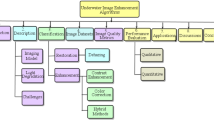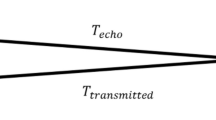Abstract
Although the use of blind deconvolution of image restoration is a widely known concept, little literatures have discussed in detail its application in the problem of restoration of underwater range-gated laser images. With the knowledge of the point spread function (PSF) and modulation transfer function (MTF) of water, underwater images can be better restored or enhanced. We first review image degradation process and Wells’ small angle approximation theory, and then provide an image enhancement method for our underwater laser imaging system by blind deconvolution method based on small angle approximation. We also introduce a modified normalized mean square error (NMSE) method to validate the convergence of the blind deconvolution algorithm which is applied in our approach. The results of different initial guess of blind deconvolution are compared and discussed. Moreover, restoration results are obtained and discussed by intentionally changing the MTF parameters and using non-model-based PSF as the initial guess.
Similar content being viewed by others
References
Hou W, Lee Z, Weidemann A D. Why does the secchi disk disappear? An imaging perspective. Optics Express, 2007, 15(6): 2791–2802
Hou W, Gray D J, Weidemann A D, Fournier G R, Forand J L. Automated underwater image restoration and retrieval of related optical properties. In: Proceedings of IEEE International Geoscience and Remote Sensing Symposium. 2007, 1889–1892
Wells W H. Theory of small angle scattering. AGARD Lecture Series, 1973, 61
Hou W, Gray D J, Weidemann A D, Arnone R A. Comparison and validation of point spread models for imaging in natural waters. Optics Express, 2008, 16(13): 9958–9965
Moran S E, Ulich B L, Elkins W P, Strittmatter R J, DeWeert M J. Intensified CCD (ICCD) dynamic range and noise performance. Proceedings of SPIE, 1997, 3173: 430–457
Lane R G. Blind deconvolution of speckle images. Journal of the Optical Society of America A, 1992, 9(9): 1508–1514
Richardson W H. Bayesian-based iterative method of image restoration. Journal of the Optical Society of America, 1972, 62(1): 55–59
Lucy L B. An iterative technique for the rectification of observed distributions. The Astronomical Journal, 1974, 79(6): 745–754
Fish D A, Brinicombe A M, Pike E R, Walker J G. Blind deconvolution by means of the Richardson-Lucy algorithm. Journal of the Optical Society of America A, 1995, 12(1): 58–65
Gonzalez R C, Woods R E. Digital Image Processing. New Jersey: Prentice Hall, 2002
Pratt W K. Digital Image Processing: PIKS Scientific Inside. 4th ed. New Jersey: Wiley-Interscience, 2007
Zhang J, Zhang Q, He G. Blind deconvolution: multiplicative iterative algorithm. Optics Letters, 2008, 33(1): 25–27
Author information
Authors and Affiliations
Corresponding author
Rights and permissions
About this article
Cite this article
Fan, F., Yang, K., Xia, M. et al. Underwater image restoration by means of blind deconvolution approach. Front. Optoelectron. China 3, 169–178 (2010). https://doi.org/10.1007/s12200-010-0012-1
Received:
Accepted:
Published:
Issue Date:
DOI: https://doi.org/10.1007/s12200-010-0012-1




